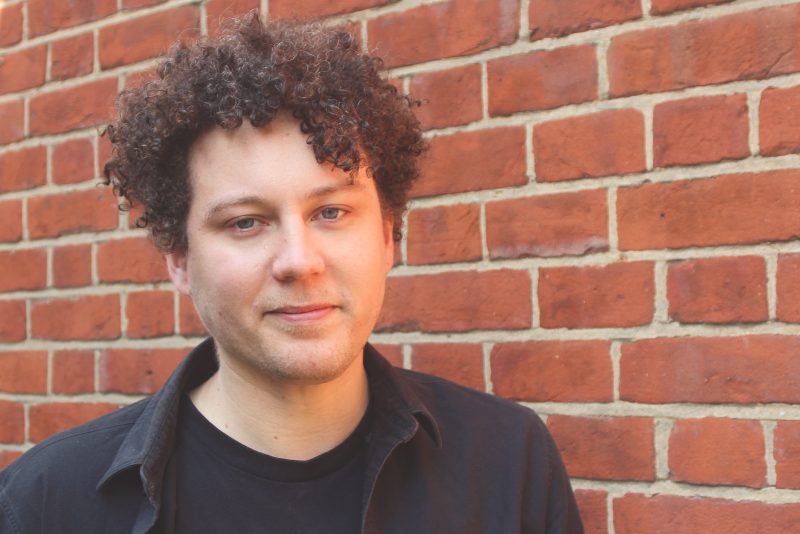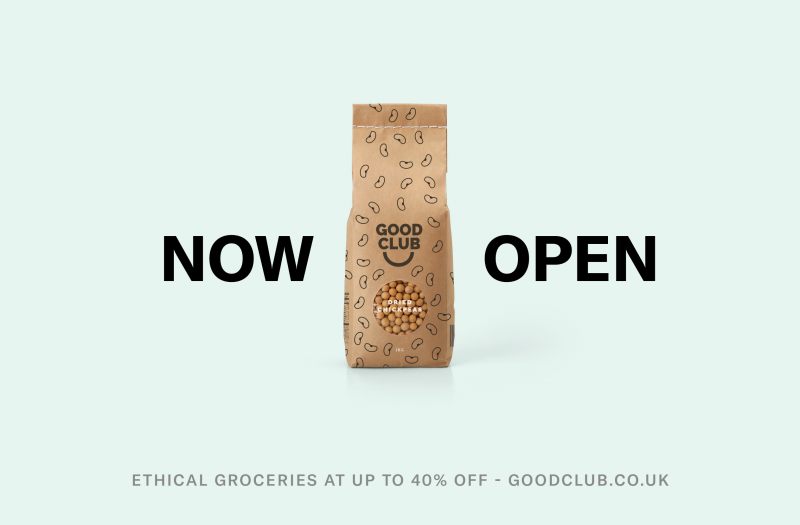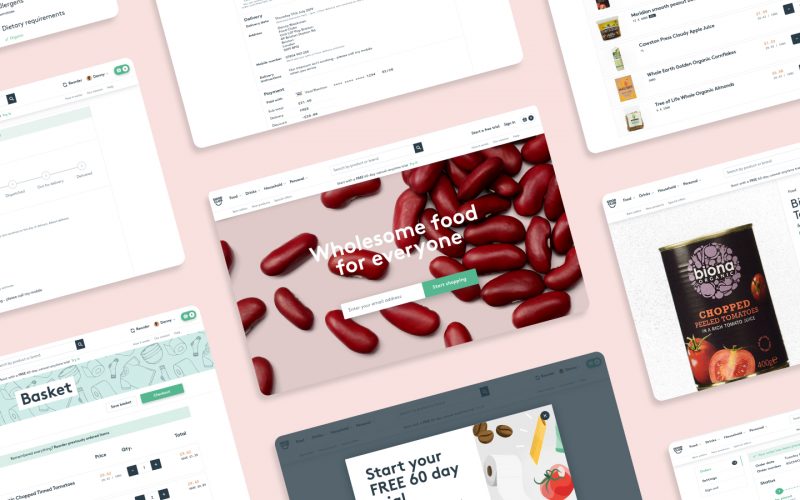This year, Chaptr are on a mission to find out what makes the marketeer tick. Let’s talk about branding. Let’s talk about campaigns. Let’s talk about content strategy. And where better to start than with one of our favourite companies around right now; Good Club.
We spoke with Co-Founder Danny Blackman to explore how they built their sustainable food brand from a shipping container in Brixton, to going toe-to-toe with some of the biggest players in the industry.

So, what’s your background?
I’d say I’ve come through the fairly traditional route of studying marketing and design at university, going into agency work, getting sick of it and trying to find something more meaningful.
When I came out of university, I knew I wanted to build sites and apps, so I applied to a bunch of agencies in London not fully understanding the difference between ‘marketing’ and ‘product’. After a few years in agency-land, I struck out on my own to follow a more product-led path.
So how did Good Club come into the picture?
Good Club is an online sustainable supermarket – We believe it’s vital to make sustainable products accessible to everyone, and by reducing the supply chain and cutting necessary overheads, we can change the economics and access of sustainable goods.
I’ve been running Good Club with my co-founder and CEO Ben for three years. Ben’s from a sustainability and food background – previously he co-founded Farm Drop, which is essentially a Farmer’s Market delivered to your home. We worked together previously on another sustainability-focused business of his, and one day he came to me and said “Hey! I’ve got an idea for a business”, and I said “yeah, alright…” because, in my position, you get that a lot.
We worked on some initial wireframes together, and then he went away and pitched it to some VC’s. After about 6 months of not hearing anything, I got a call from Ben to say “hey! I’ve got some cash!” and I said “Great! Let’s do it!”. And… Here we are now.
Why do you do what you do?
After being in marketing for about 6-7 years I was done with throw-away campaigns. I used to work for a good agency, with good clients – some of it was a bit tedious, but the majority of it was great. But the fact we were being paid such large sums of money, to do stuff that just didn’t matter in the grand scheme of things, didn’t sit well with me.
One example would be a campaign for a well-known cat food brand. They spent around £500k making a single page Facebook app that was essentially a picture of a cat, a bit of copy, and an email capture form. It was such a pointless waste of time and energy, and I sat there thinking “What am I doing?!”. I was concerned that this was what I got up for in the morning.
I was sick of spending three months working late nights just for something to be live for a month or so. We never really got to see the uplift – in those days metrics weren’t really measured properly. You’d make something shiny that people thought looked cool and move onto the next thing.
It was cool at times – I loved working there, the people were mostly great and really talented, but it wasn’t changing the world. I didn’t feel I was making a positive impact on anything. I said to myself “I want the next thing I work on to be something I really care about.” And that was when Good Club appeared.
So did you find what you were looking for with Good Club?
I wouldn’t say I’m a sustainability nerd, but I feel like if you think about what’s happening in our world for more than, say, a second… you’ll know that it’s important. Consumerism and the state of the world as it is cannot carry on like it is, and this project felt like an opportunity to contribute to make things better.
I’m certainly not saying we’re changing the world overnight by selling some organic beans over the internet, but the steps we’re making to be more sustainable and ethical in all we do are helping. Every other team I’ve worked in has had the mantra of “follow the data”. Data makes decisions for you. However with this business, we quickly realised that while data is definitely important, we have something that trumps that – we want to be making decisions that help the environment and make things better.
We could do something that drives more sales, and makes the business bigger – but if it does that while going against our desire to make things better for our planet, then we’re going against our fundamental mission and brand. Making money is important, I think our investors would feel some uneasy if we didn’t think so, but the point is to do so while staying true to that mission and doing the right thing.
It’s nice to see someone taking their mission seriously.
It’s one of our USPs! People are coming to us because of what we stand for, and that enabled us to essentially build a national supermarket from a shipping container in Brixton.
Timing helps, too – We’ve found ourselves in the middle of the zeitgeist. Extinction Rebellion, Planet Earth II, the bushfires in Australia – all of those things have happened since we started the business, and really got people thinking and taking the environment seriously, and there are a number of people like us that are offering alternatives in people’s daily life that help them make a change.

Let’s talk about branding.
Branding is really important, but it’s also so much more than how something looks. It’s how you behave, it’s the mission statement and how you carry yourself. That’s what people buy into, and that’s the stuff that really makes your brand what it is. People can tell us apart from the competition by our actions… the logo just represents that.
Being totally honest – the visual side of the brand as it currently stands is work in progress, kind of like everything else in the business. We’re heavily under-resourced so every day we all have to sit and think “what can I do today that’s going to have the biggest impact? What can I do today that’s going to move the needle?”. We have to prioritise.
As much as I’m from a design background, and would love to have spent hours deliberating over a beautifully crafted brand, the reality of our situation meant I had to get something that I thought would do the job quickly. The logo was done in literally ten minutes. The colours were what looked nice on the day. But that’s fine! It’s still better than a lot out there and we can come back revisit it when we have more cash in the bank and time to focus on it.
Is there any advice you’d give to someone starting this process themselves?
When people come up with a business idea – service, tool, product, whatever – it’s easy to get carried away with the idea of branding and building without validating a market. I’ve seen a lot of projects that fall flat because people haven’t made sure customers are willing to pay for what they’re offering. I know really great, smart people that have come up with what sound like wonderful ideas – but they didn’t know how to access their customer, or how to sell if and when they do find them.
So how did you validate your market?
It depends on the business, but I think for a B2C business it’s pretty straight forward. Facebook and Google have such good tools for targeting, so if you have an idea of who your customer is and what will speak to them, you can test it pretty quickly. Admittedly, you’ll need a few hundred quid, a landing page, some text and a couple images – but it’s much cheaper to get those things together than to dive into building your first full website/product/whatever only to find out later that people just aren’t responding to it. You know straight away that you’re onto something. You don’t need to build anything, you don’t need to design anything; you’re just able to test your idea.
